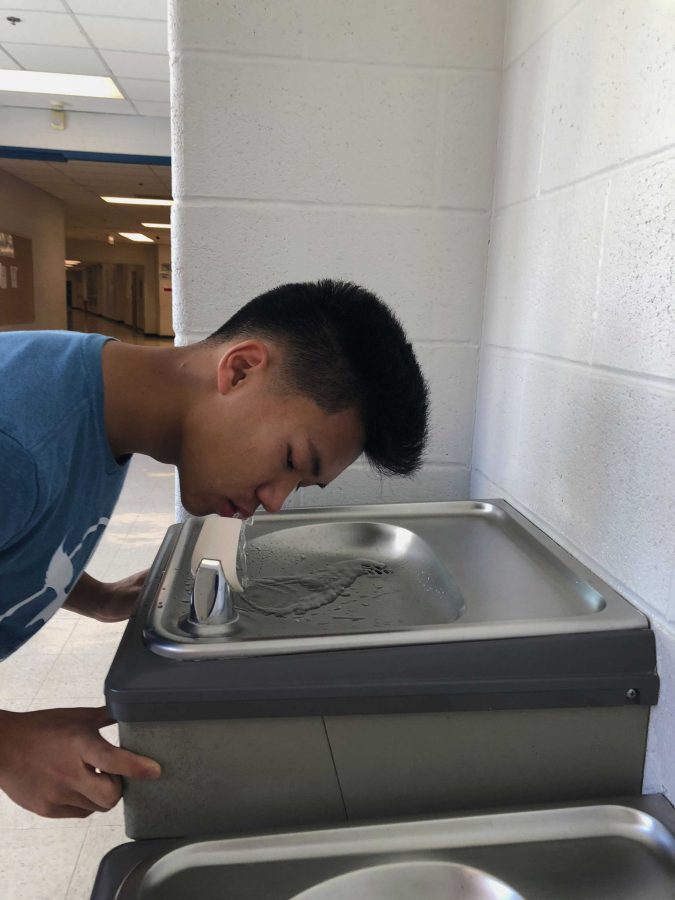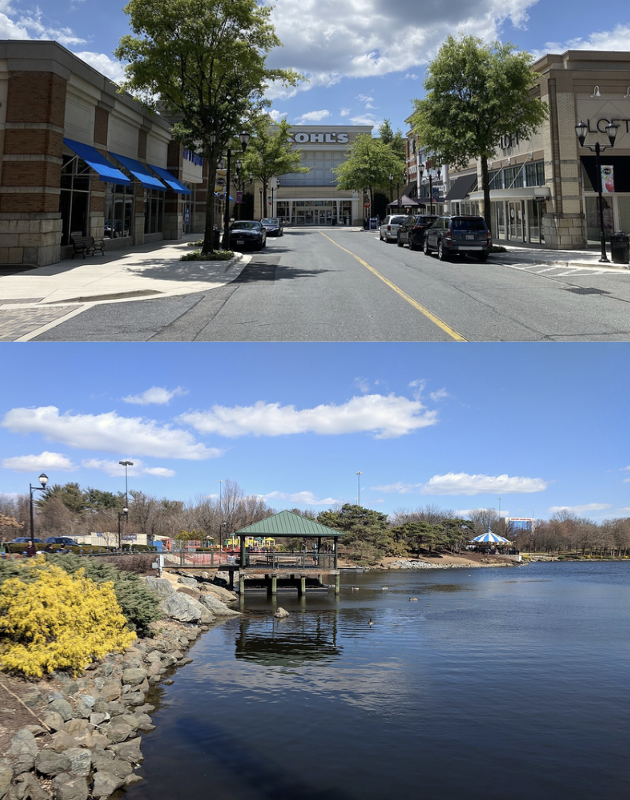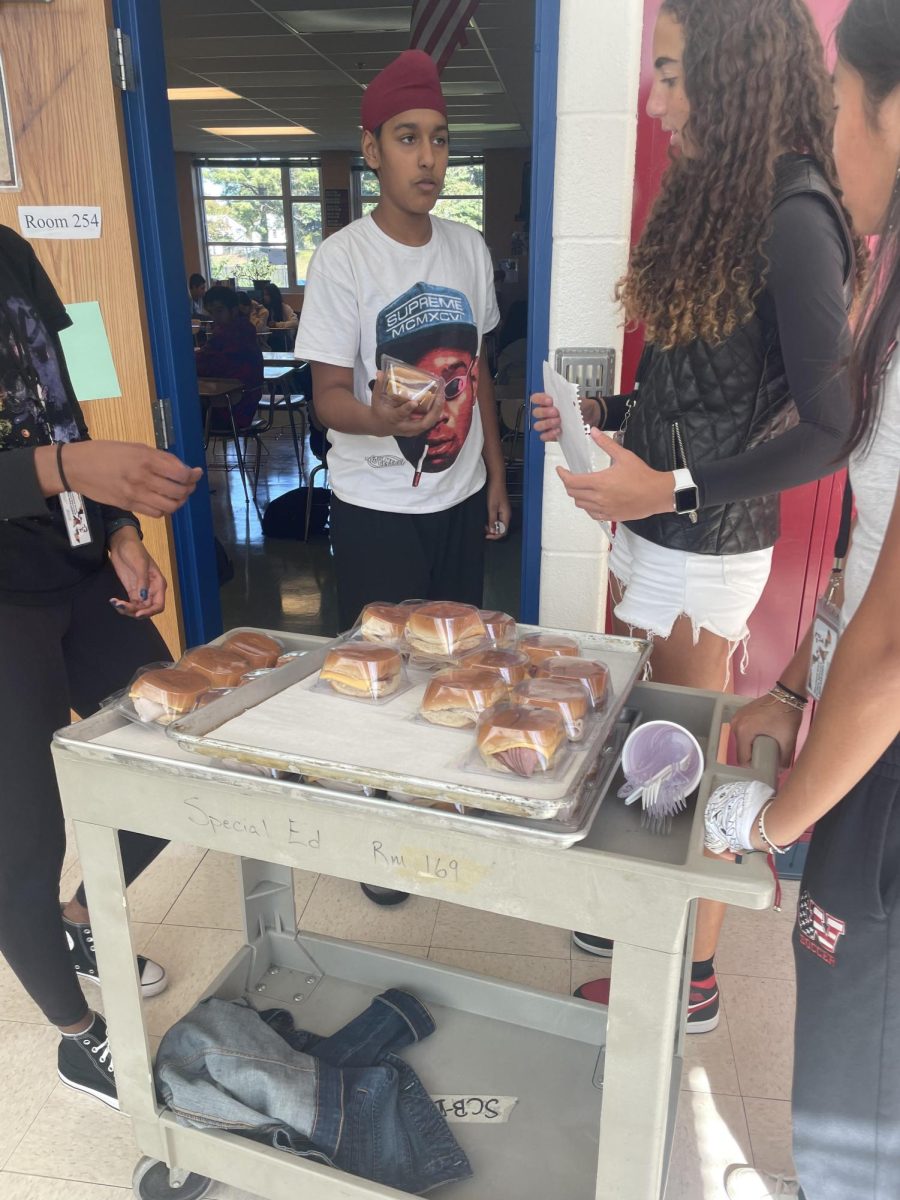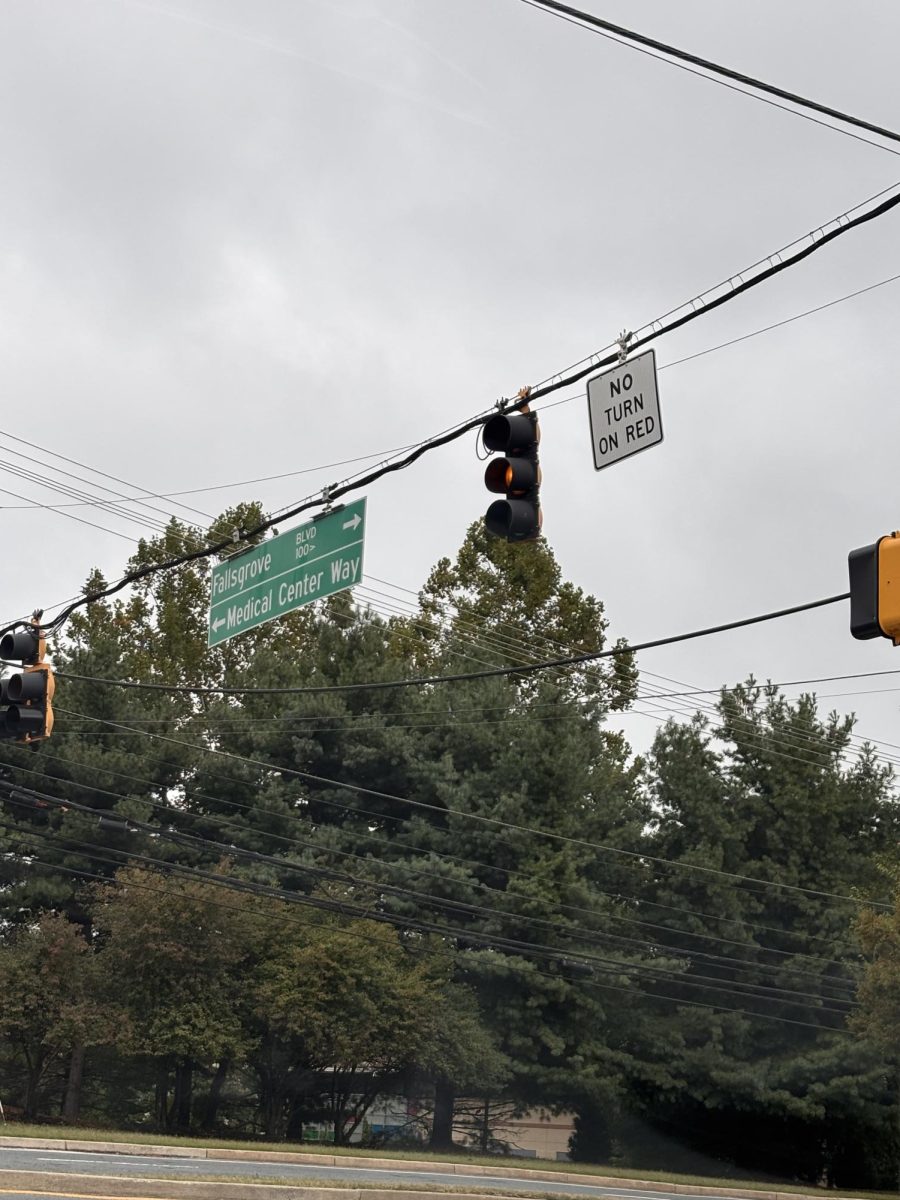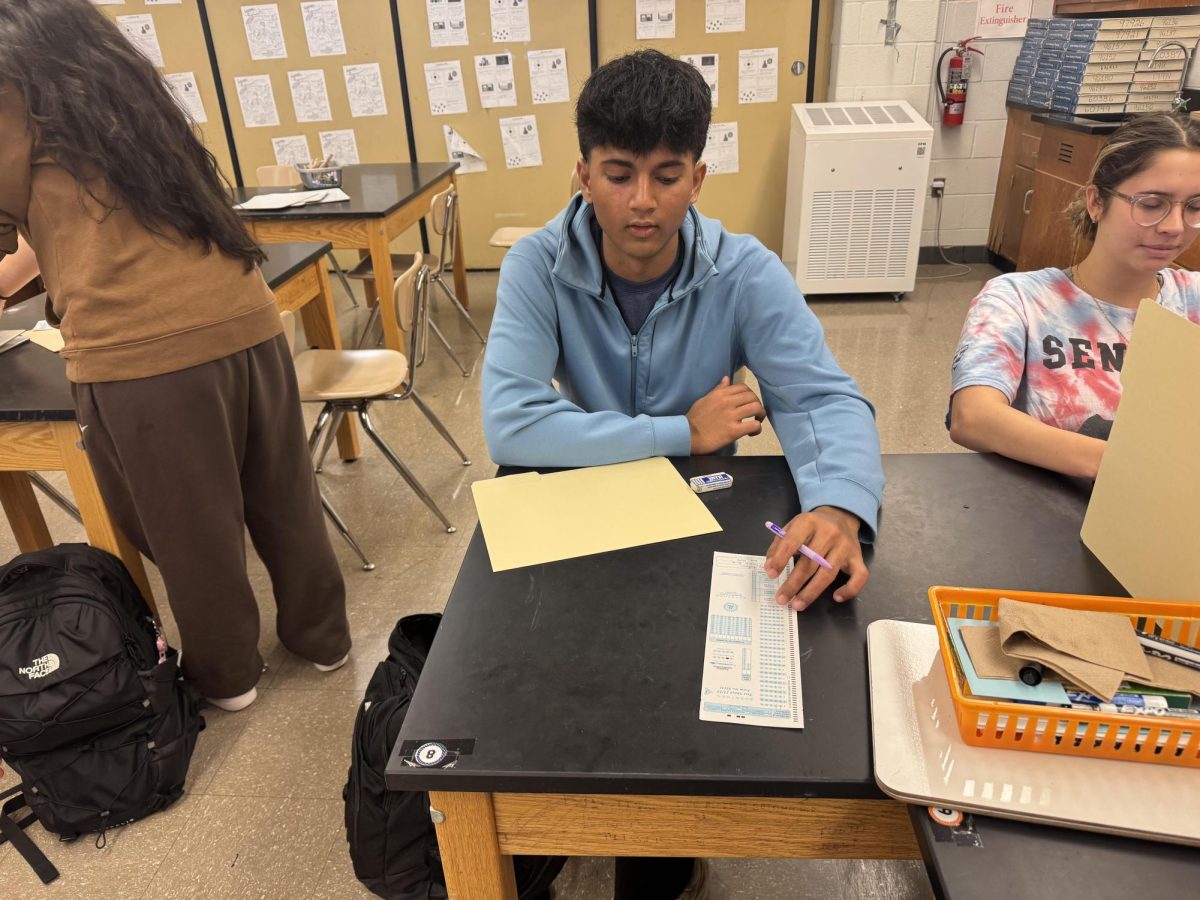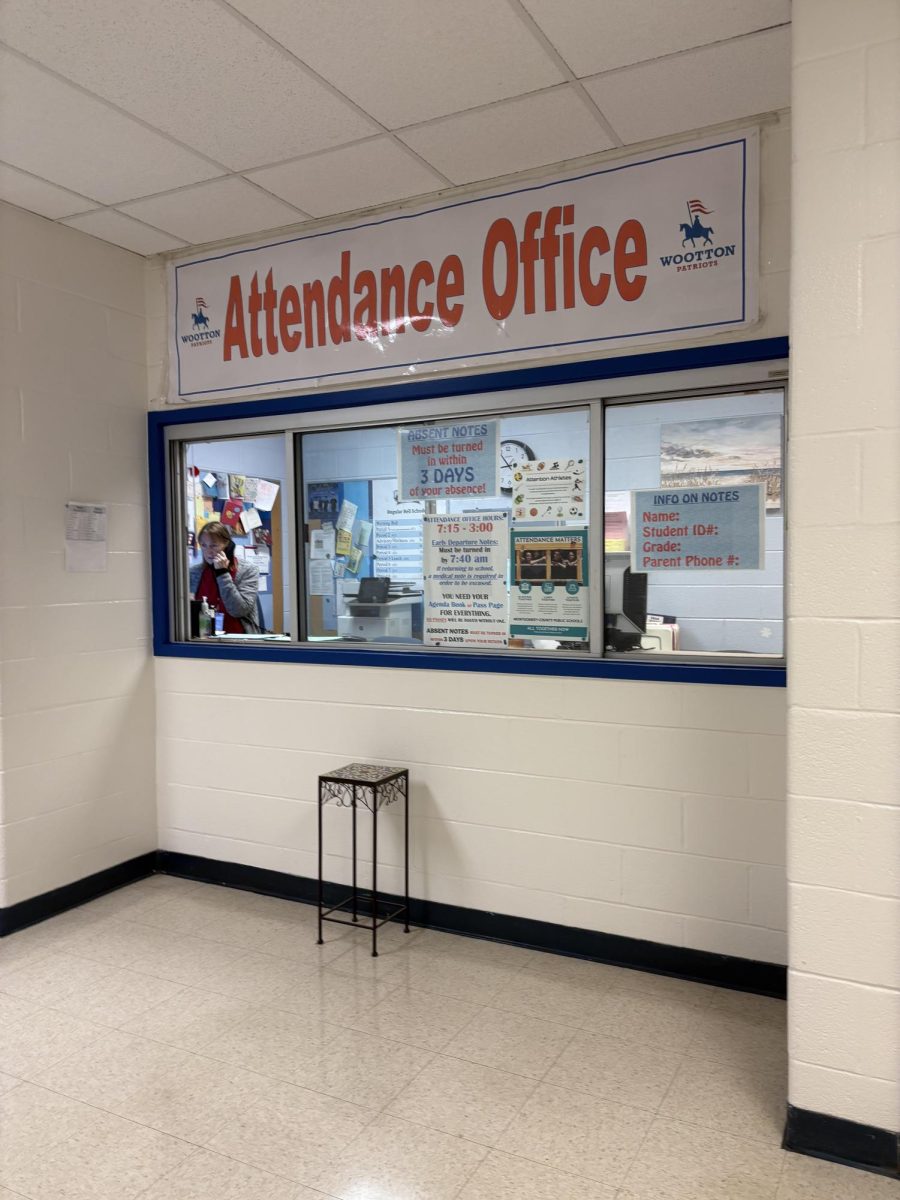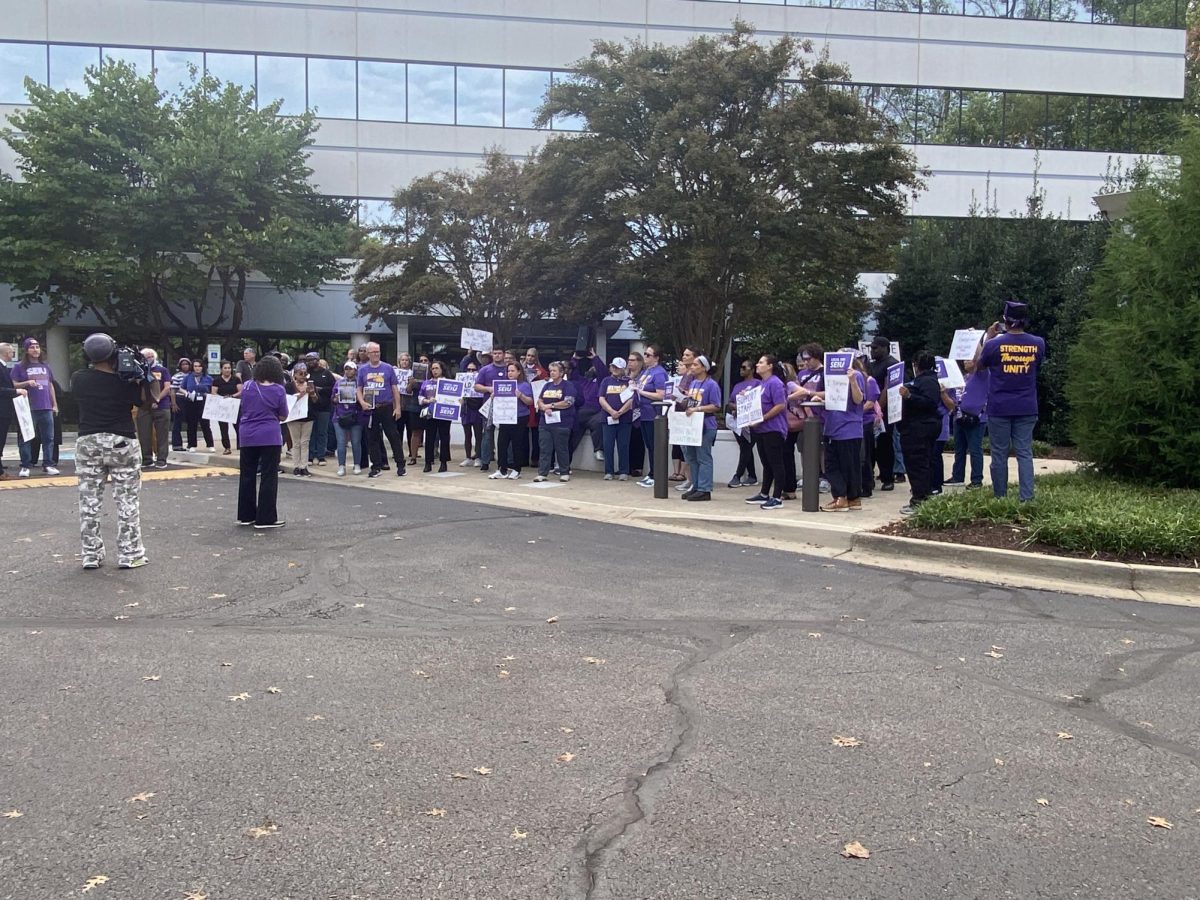Anna Baldwin
opinion editor
Students aren’t the only ones getting settled into school this year. Rumors have been circulating that the school’s water fountains contain lead.
Larry Hogan, Governor of Maryland, set out a new legislation requiring public and private schools to have periodic testing for lead in the water fountains. According to the Montgomery County School’s website, “MCPS has tested the drinking water in all schools prior to June 15, 2018.”
“Rumors have been circulating.”
At Wootton, as of Aug. 3, they tested 59 water fountains. Of the 59, one water fountain, the one near room 112, was found with 112.0 parts per billion, which exceeds the limit set by The Environmental Protection Agency and is unsafe for students to consume. The water fountain near room 112 is curently available to use and as stated on the MCPS website, “MCPS removed the fixture from use and implemented remediation measures.”
This is a new problem for the community. As stated in Bethesda Magazine, “MCPS has waited 11 to 14 years to test most of its schools for this toxic substance in its water.” The EPA sets the guideline of 20 parts per billion (ppb), for the lead in the water fountains before the fixture needs to be replaced, but in nearby schools such as D.C. schools, there limit is five parts per billion. The Food and Drug Administration also has a maximum of five parts per billion for bottled water.
Lead poisoning can cause short term and long term harm to students and is not something to take lightly. According to the Mayo Clinic, signs of lead poisoning include, “developmental delay, learning difficulties, irritability, loss of appetite, weight loss, sluggishness and fatigue, abdominal pain, vomiting, constipation, hearing loss, and seizures.”
“The Food and Drug Administration also has a maximum of five parts per billion for bottled water.”
Lead in the water is not only a problem in the Wootton community. According to WTOP, “Poolesville Elementary School had 11 outlets with elevated lead levels — the most out of all the schools tested. Flower Hill and Cold Spring Elementary Schools had nine outlets with high levels each, and South Lake Elementary had eight. A classroom water fountain at Lucy V. Barnsley Elementary School in Silver Spring, tested 356 ppb,a faucet in an ESOL classroom in Farmland Elementary School in Rockville tested at 564 ppb,a faucet in computer lab inside Fields Road Elementary School in Gaithersburg, tested at 259 ppb,a water fountain in Gaithersburg Elementary School tested at 253 ppb,a faucet tested at 310 ppb in a Maryvale Elementary School classroom in Rockville, a classroom faucet at South Lake Elementary School in Gaithersburg, tested at 431 ppb, at Eastern Middle School in Silver Spring, a classroom faucet tested 115 ppb, In Kensington, a kitchen faucet at Einstein tested at 700 ppb.”
Outside of Montgomery County, according to NBC, “The Somerset County public school system has dealt repeatedly with high lead levels at Deal Island Elementary School, serving about 150 students, teachers and staff on the Eastern Shore. A pipe replacement project, completed in 1997, was followed by installation of a chemical treatment system after sampling in September 2014 detected excessive lead in tap water from one classroom sink,” Sean Kenny, a Maryland Department of the Environment regulatory and compliance engineer, said to NBC.
Administration seems to be on the quieter side of this issue. No letter, email, or phone call has been sent out to parents and no teachers have told students. David Adams, the business administrator, said, “I don’t feel comfortable discussing this issue.”
SGA is taking a stand. The money they receive from students buying homecoming tickets is going toward filtered bottle stations that will be placed on top of water fountains. “The money raised through Homecoming ticket sales will go towards filtered bottle stations on water fountains, not new water fountain systems. The stations will be added onto the top of existing water for units, like the ones you see at gyms and airports. The goal installing these filtered bottle filling stations is that Wootton students and staff will feel more comfortable knowing the water they drink is potable and health, as the filters will place an extra precaution eliminating the risk of containment in the water supplied by old, country pipes. We hope that installing these stations we will be encouraging students and staff to drink more water, which is an essential part of well being,” senior Liam Hall, president of SGA said.
As stated on the Academy of Nutrition and Dietetics website, on average students should be drinking six to eight cups of water a day but when students don’t feel safe drinking from the water fountains, staying hydrated can be difficult. “ I was really upset when I heard about the lead in the water fountains because I have practice every day after school and it makes it harder to stay hydrated since I don’t feel safe drinking out of the water fountains so now I bring extra water bottles to school to last me through the school day,” junior Jessica Llewellyn said.
Students may have heard about the water crisis in Flint, Michigan. As stated on CBS news, “On April 25, 2014, Flint, Michigan switched from water purchased from the City of Detroit to water pumped from the Flint River as a way to save money. It didn’t take long before Flint residents started complaining that something was wrong with the water.”
Tony Palladino, a resident in Flint, is still struggling with side effects from the lead. He said on CBS news he has no doubt “why his family’s hair is still falling out – it’s the bacteria and chemicals in the water.”
At Laytonsville Elementary in Montgomery County, just outside Washington, D.C., they have been using bottled water since 1990 to prevent students from drinking water contaminated by lead. According to NBC, using bottled water costs the school $1,500 a year. Not only is bottled water expensive, using bottled water harms the environment.
MCPS is taking action against the dangerous water. According to the MCPS website, “Montgomery County Public Schools ensures that school drinking water is safe through implementing U.S. Environmental Protection Agency (EPA) technical guidance for testing protocols and other proactive measures for school drinking water. In addition, MCPS also complies with regulations issued by the Maryland Department of the Environment (MDE) including periodically testing of all drinking water outlets on a three-year cycle. To comply with the new MDE regulations, all drinking water outlets in MCPS will be tested by June 30, 2018.”
“Administration seems to be on the quieter side of this issue.”
In Montgomery County 238 of the 13,248 fixtures tested were found to have lead levels above 20 ppb, according to the MCPS website. MCPS stated on their website, “The fixture [the water fountain] is not returned to service until post-remediation testing confirms the corrective actions lowered the test results below the action level.”
In order to have and maintain safe drinking water, the Center for Disease Control and Prevention stated on their website, “School drinking water depends on a reliable source of safe drinking water, properly maintained plumbing infrastructure and clean and well-maintained fixtures for students to access when they need a drink.”
Where Montgomery County gets their water is also an important factor in providing clean water to schools. The Washington Suburban Sanitary Commission (WSSC) is a bi-county political subdivision of the State of Maryland that provides safe drinking water and wastewater treatment for Montgomery County. As stated on their website, “The Patuxent and Potomac rivers are the sources of all the water we filter and process. The source water treated at the Patuxent Water Filtration Plant (WFP) is held in two reservoirs—Triadelphia and T. Howard Duckett (also known as Rocky Gorge)—and is pumped to the plant. The Potomac WFP draws water directly from the Potomac River.”
“The water fountains are all fixed and available to use.”
According to CNN, “Lead can enter your home when lead plumbing materials, which can include faucets, pipes, fittings and the soldier that holds them all together, become corroded and begin to release lead into the water. Corrosion is most likely to happen when water has a high acid or low mineral content and sits inside pipes for several hours.”
The only certain way to tell if the water is dangerous to consume is to get it tested but according to Daily Health Remedies there are signs you should look for in the water before you drink.One way to determine if your water is contaminated with lead is “if your water is cloudy, if there is a chlorine smell, if the water has an orange or brownish tint, a sulfur smell is occuring while you drink the water, if there is an oily film on standing water, and if the taste is bitter or metallic.”


